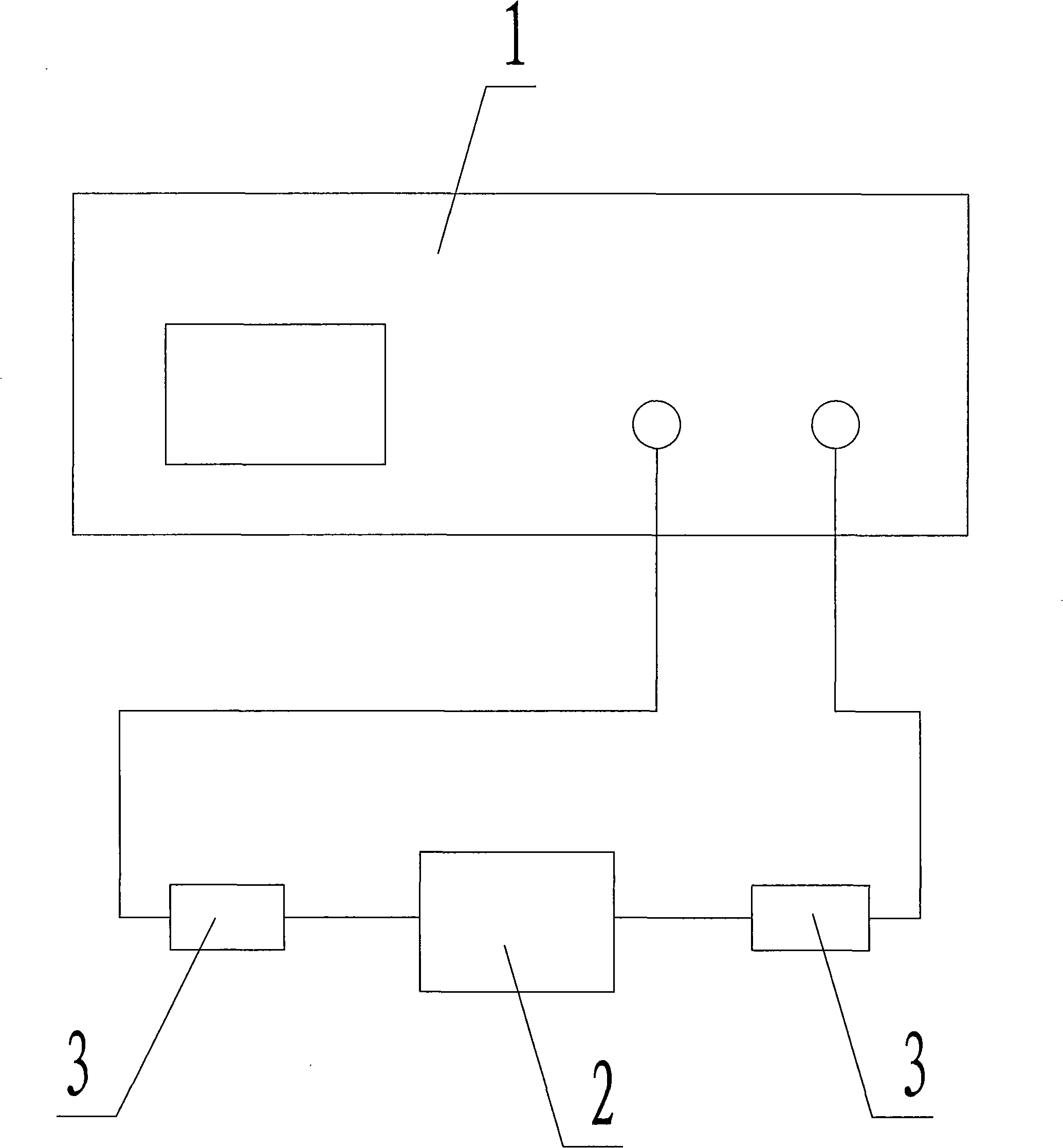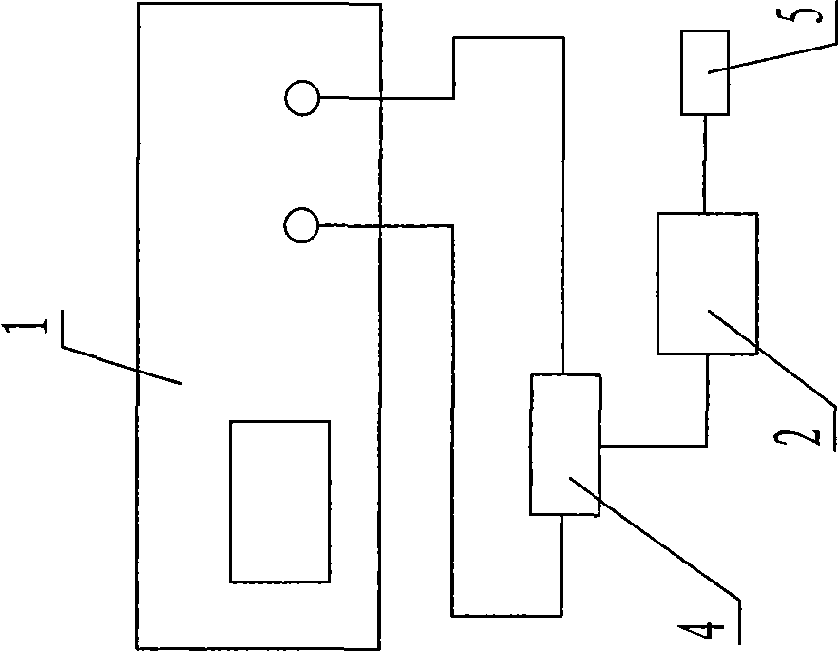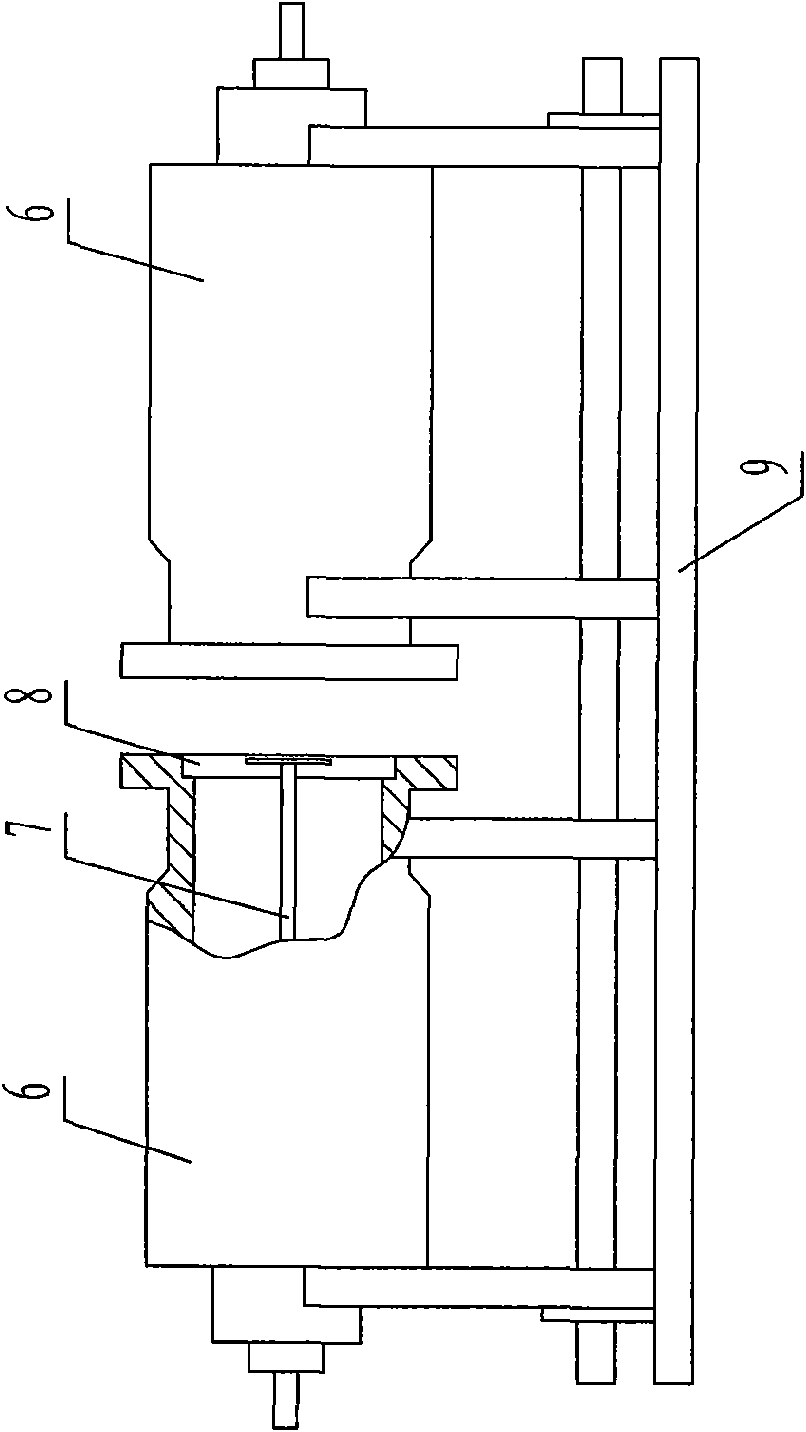Anti-electromagnetic radiation textile simulating and testing instrument
An anti-electromagnetic radiation, tester technology, applied in the use of wave/particle radiation for material analysis, instruments, measurement of electricity, etc., can solve the problems affecting the accuracy and reliability of test results, complex interference waves, etc., to achieve simple structure, Accurate test results, accurate test results
- Summary
- Abstract
- Description
- Claims
- Application Information
AI Technical Summary
Problems solved by technology
Method used
Image
Examples
Embodiment Construction
[0021] see figure 1 , 2 , when testing the insertion loss, the two ends of the flange coaxial device 2 are respectively connected to the output and input ends of the vector network analyzer 1 through an attenuator 3; the so-called insertion loss refers to the insertion loss, that is, the transmitting device and the receiving device Among them, the signal loss caused by inserting cables or components is expressed in decibels (db) corresponding to the received signal level, and is generally used to measure the transmittance. When testing the return loss, the flange coaxial device 2 is connected to the vector network analyzer 1 by means of a reflection bridge 4 , and the other end of the flange coaxial device 2 is connected to a matching load 5 . The so-called return loss refers to the measurement of the component of the input power reflected from the flange coaxial device, which is generally used to measure the size of the reflectivity; the matching load 5 is a radio frequency ...
PUM
 Login to View More
Login to View More Abstract
Description
Claims
Application Information
 Login to View More
Login to View More - R&D
- Intellectual Property
- Life Sciences
- Materials
- Tech Scout
- Unparalleled Data Quality
- Higher Quality Content
- 60% Fewer Hallucinations
Browse by: Latest US Patents, China's latest patents, Technical Efficacy Thesaurus, Application Domain, Technology Topic, Popular Technical Reports.
© 2025 PatSnap. All rights reserved.Legal|Privacy policy|Modern Slavery Act Transparency Statement|Sitemap|About US| Contact US: help@patsnap.com



